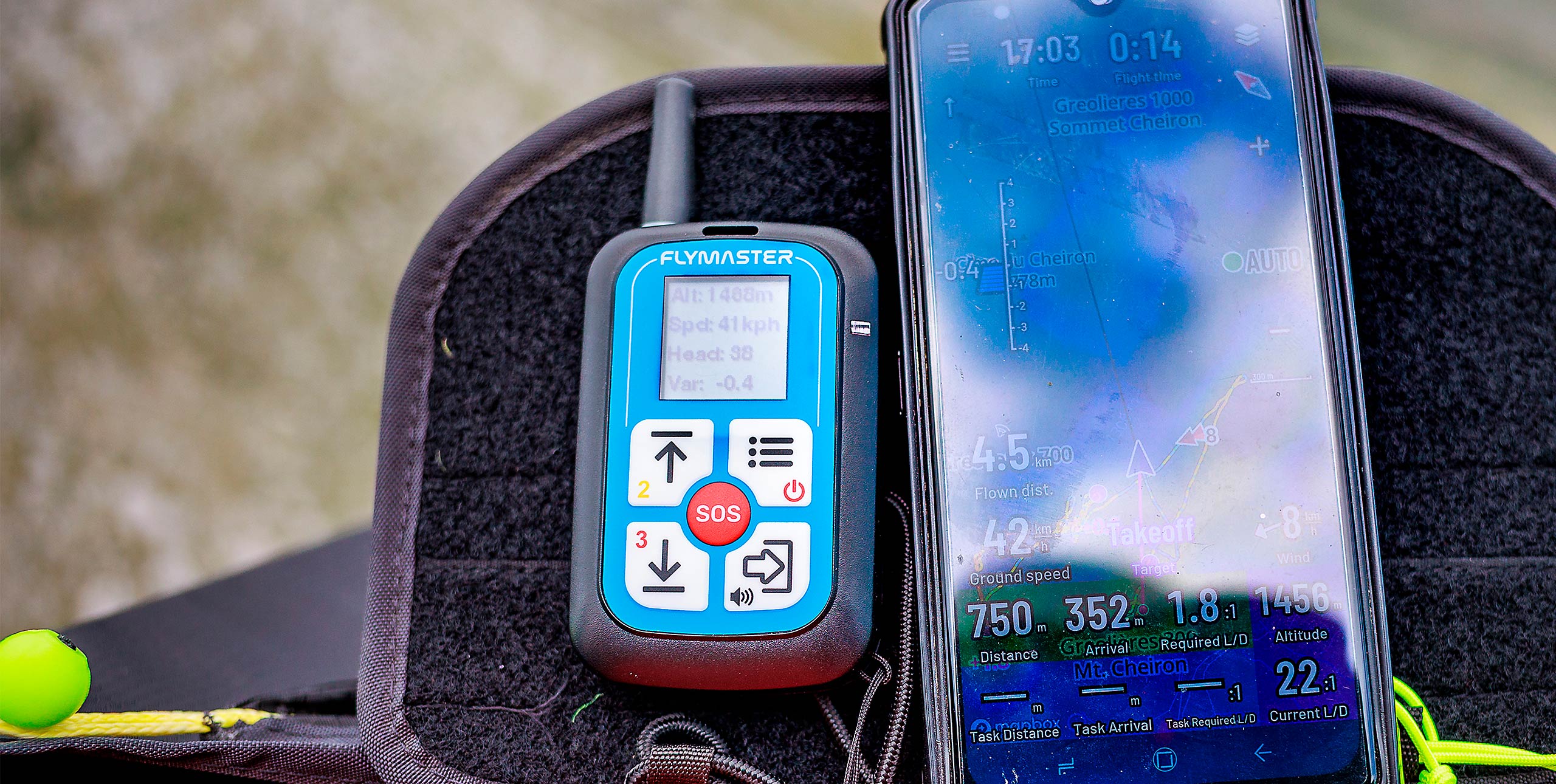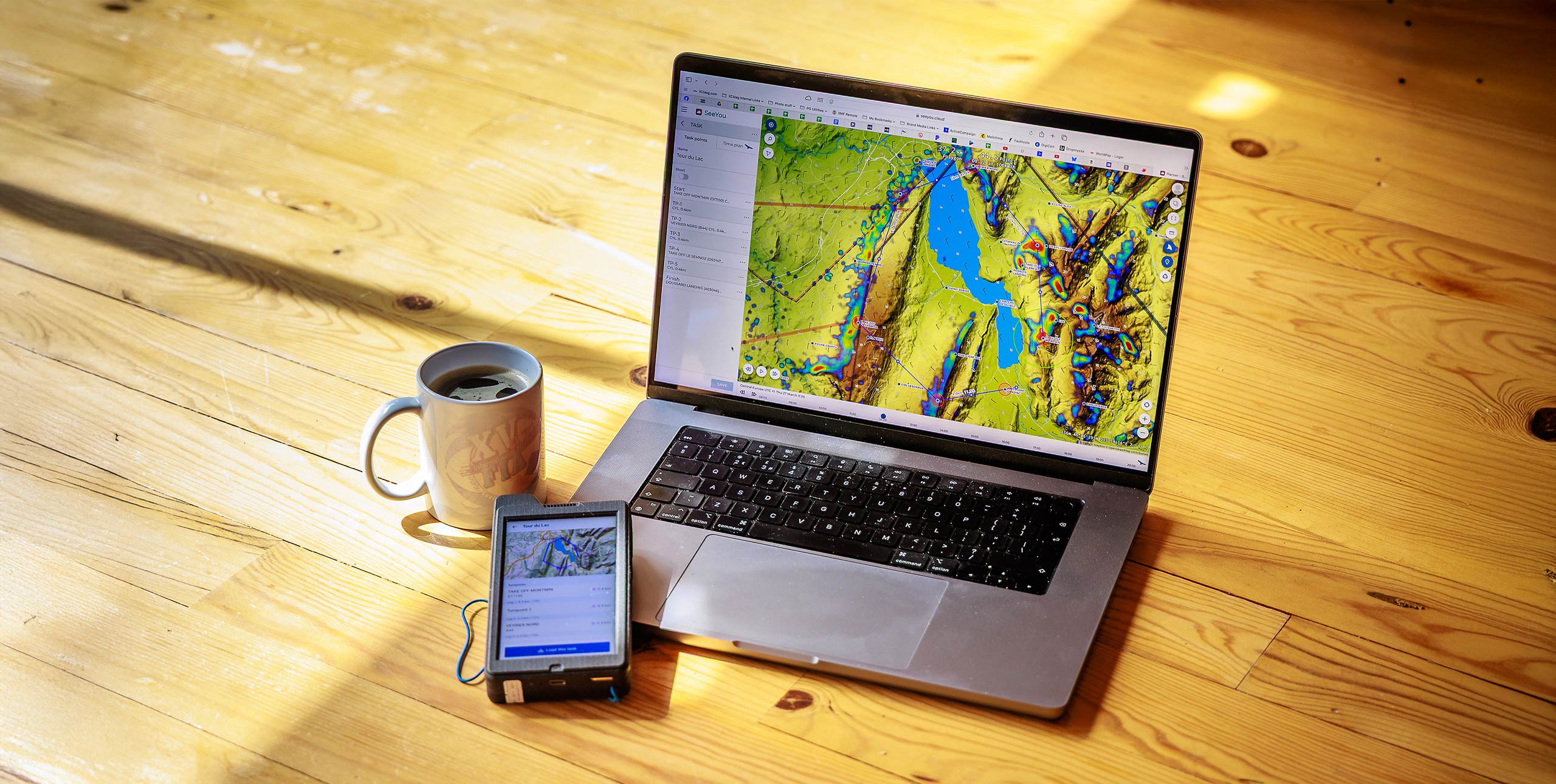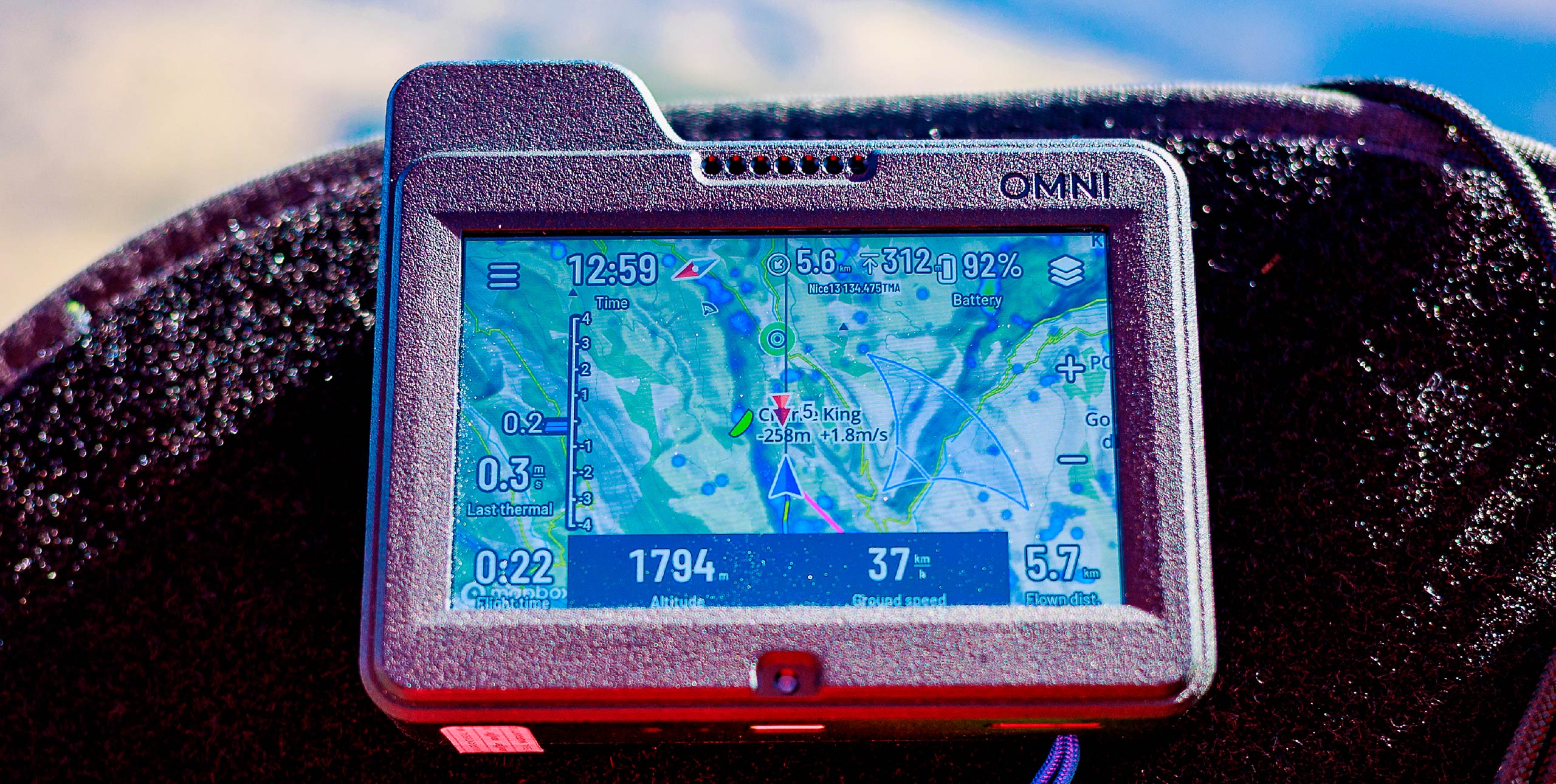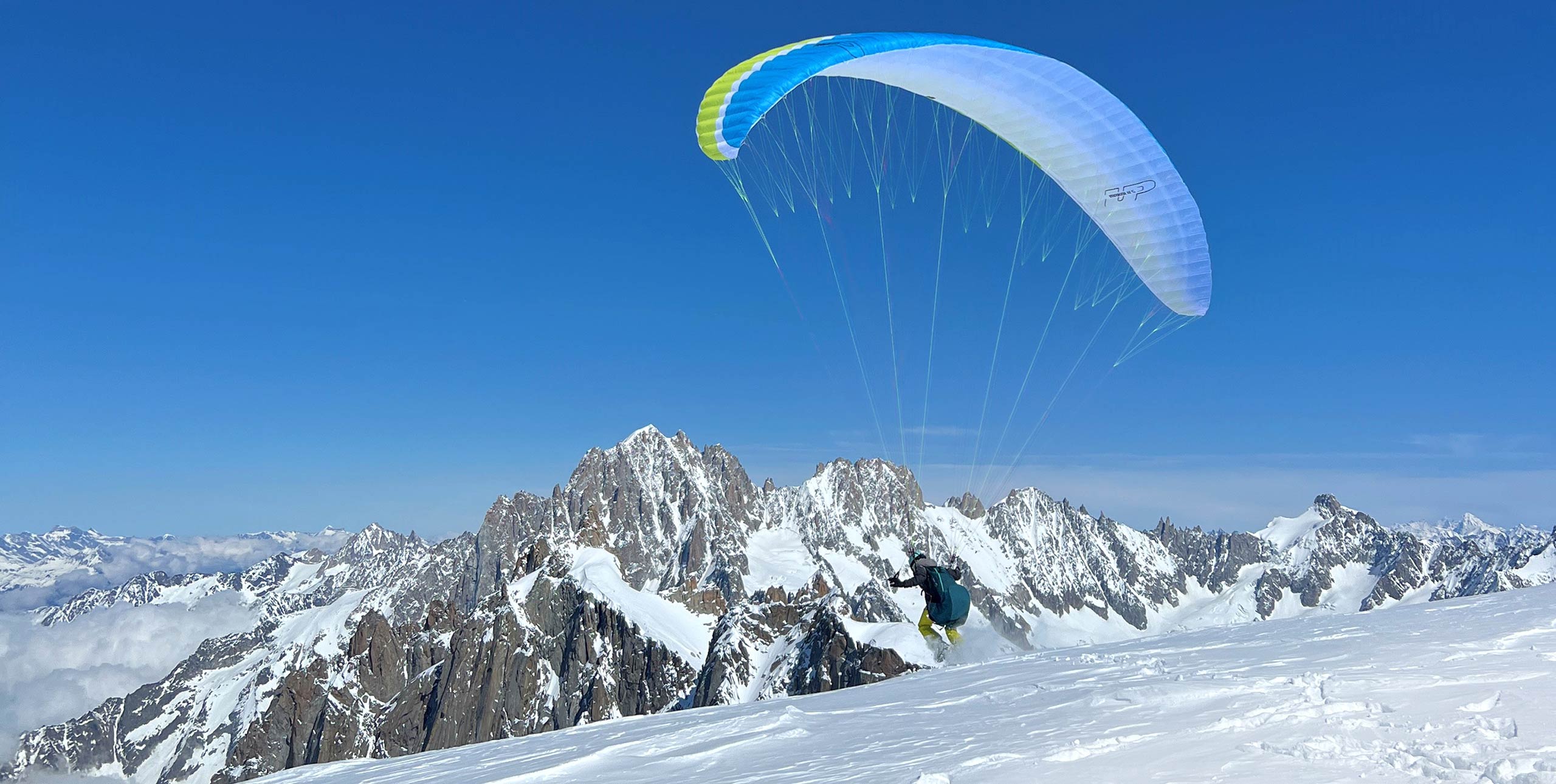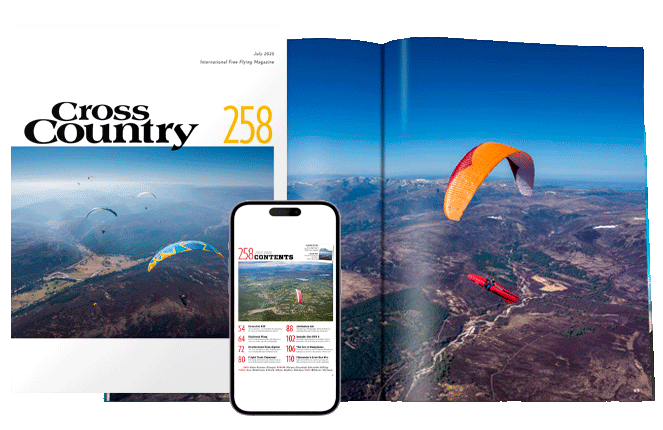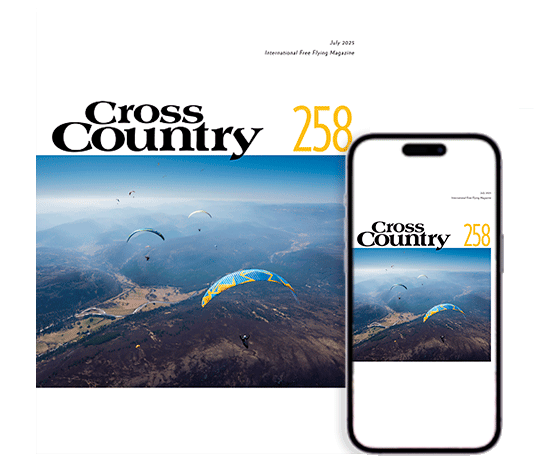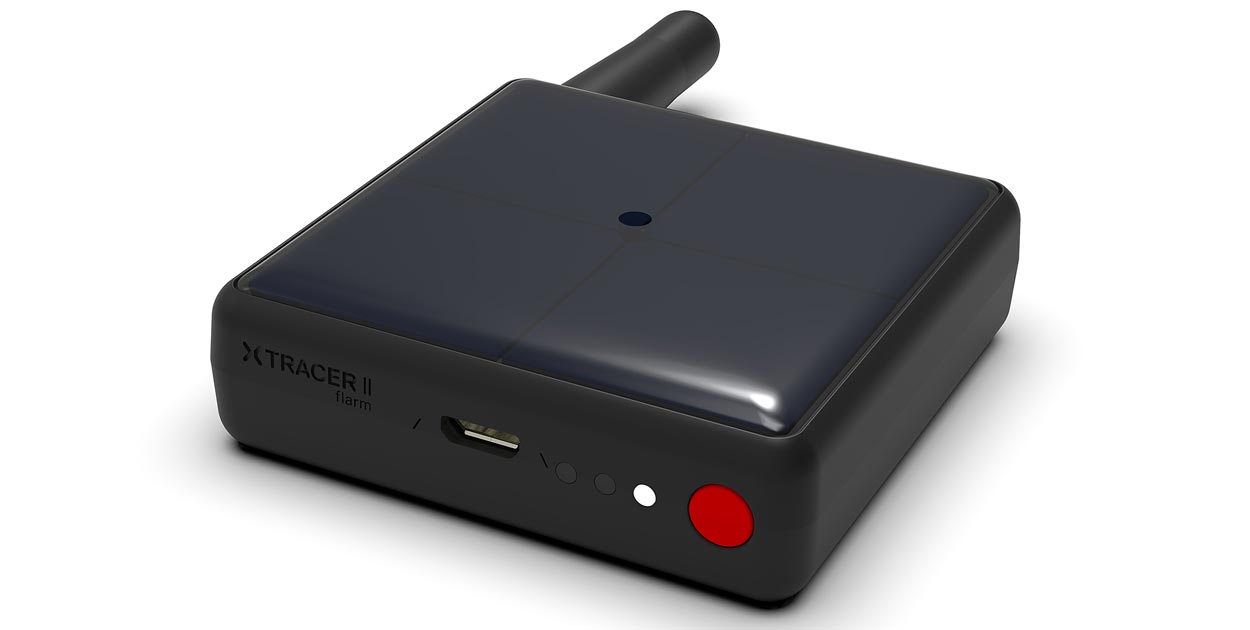
This is a fairly amazing development: Swiss designer Koni Schaforth has managed to add Flarm functionality to the already brilliant Mini II GPS.
The new unit boasts even better battery life (25 hours), plus the solar-recharge, flight logging, lag-free audio and Bluetooth connectivity that make the Mini II GPS such a hit.
Interestingly, while over half the Red Bull X-Alps field used XC Tracers this year, word hasn’t really filtered through among weekend pilots. “We went to the Super Paragliding Testival earlier this year and many pilots have never heard of XC Tracer,” says Koni.
First up, the XC Tracer II Flarm is a lot louder than the Mini II GPS. If you use a full-face helmet this is a welcome development. The unit is a little chunkier than the Mini II GPS – similar in size to the original XC Tracer, and weighing only 70 grams – with just a short 3cm well-protected aerial sticking out the top.
What is Flarm?
Flarm is a collision-avoidance system (FLight alARM) that’s fitted as standard in many light aircraft. If a near miss is likely, Flarm emits a warning signal to other pilots that you are nearby. Think of it as a flare that goes up in the other pilot’s cockpit when their track is a bit close to yours. In tests, XCTracer’s Flarm has a range of up to 30km (see flarm.com)
The system won’t warn you about possible collisions with other aircraft, but it does receive Flarm signals from other free flyers, so you can track friends who are a glide or two away through your phone.
The XCTracer II Flarm also has a collision-alert system to warn you about the several thousand powerlines and other dangers in the European Alps, among other regions. Of course some cables go right to launch: if you’re climbing out near an obvious one, you can double-tap on the vario to disable the alarm for a couple of minutes.
Most pilots link their XC Tracers to their phones, and flying apps like XCSoar and LK8000 already support Flarm functionality. If you use XCTrack and FlySkyHy, Flarm compatibility is in the pipeline.
Safety innovation
The project took over 12 months to complete. “I don’t want to downplay it, but it’s basically a Mini II GPS with an RF chip and an aerial,” Koni told us.
“The main challenge was to have good signal performance while maintaining low power consumption. The solar panel is larger to power the RF chip that sends and receives Flarm signals.”
He added: “I made a lot of protos with different aerials and configurations, and the most promising have been tested by pilots over the last six months, logging Flarm traffic all around. We’ve ended up with great data which has narrowed the product development.”
The Swiss aviation authorities are keen to support innovations in safety, and XC Tracer has applied for cash-back subsidies to make the units even cheaper for Swiss customers. Those with friends in Interlaken or Geneva will know what to do!
IN BRIEF
XC Tracer say: “Champions fly on XC Tracer!”
What is it: Lag-free vario with collision-avoidance Flarm technology
Size: 57.5 x 57.5 x 18 mm
Weight: 70g
Battery life: 25 hours
Price: €419
Published in Cross Country issue 202, August 2019.


